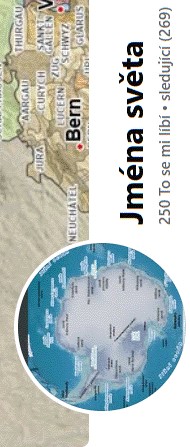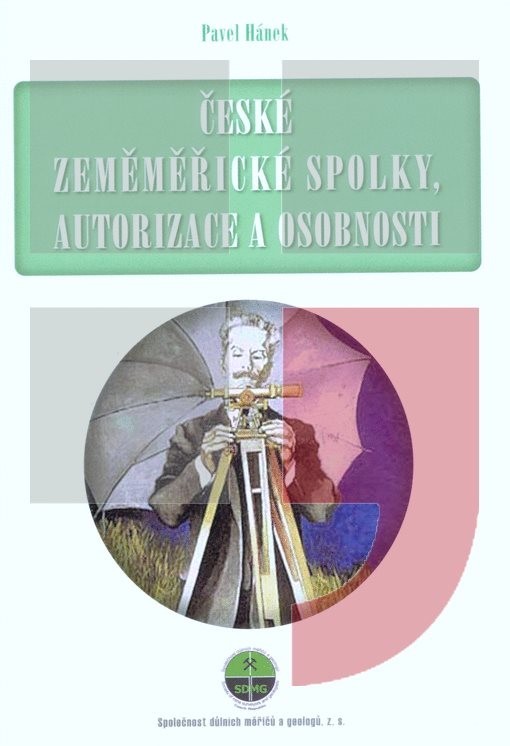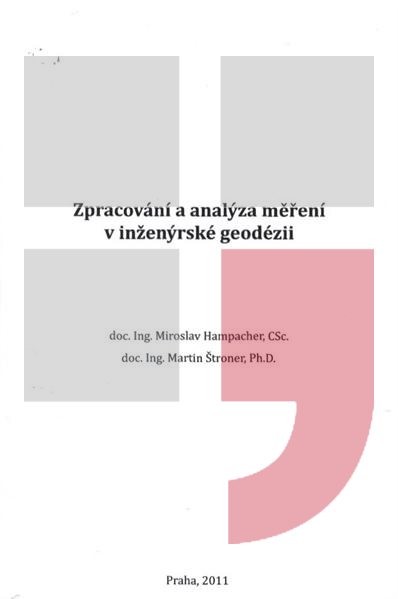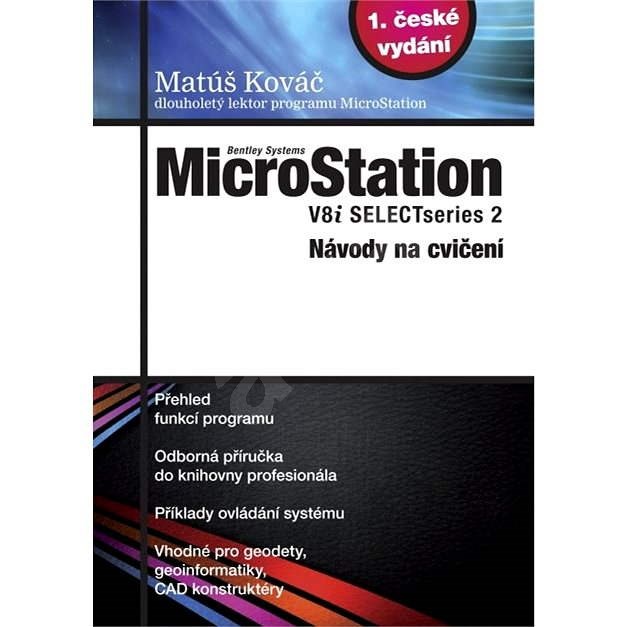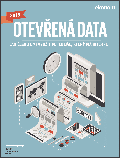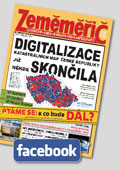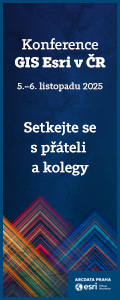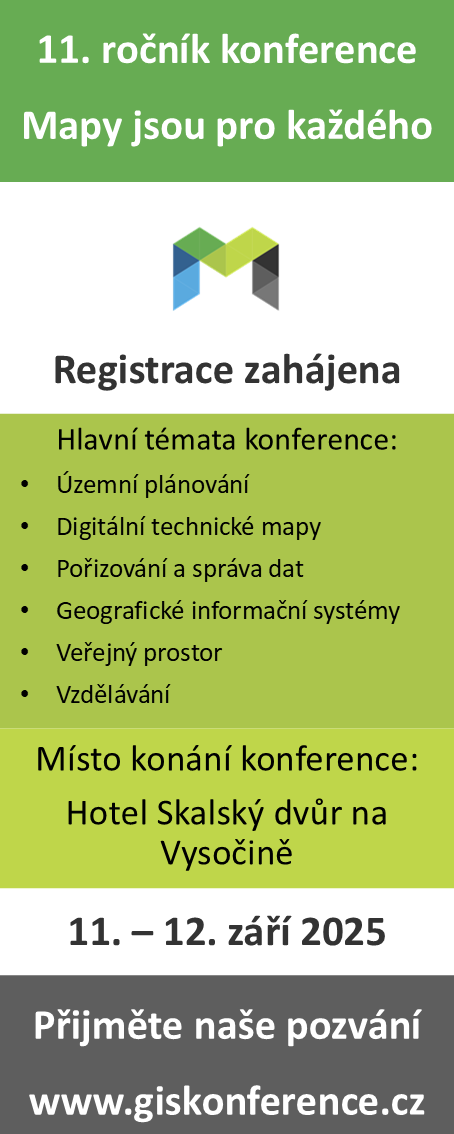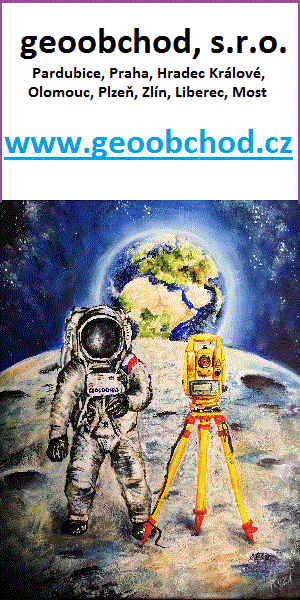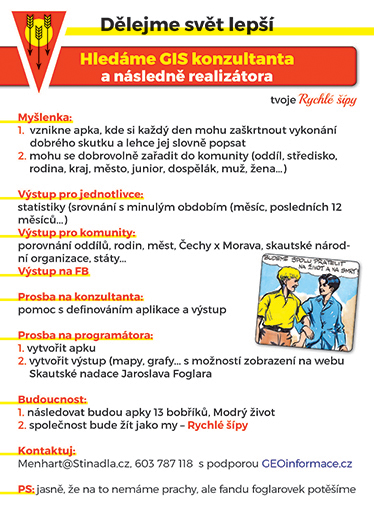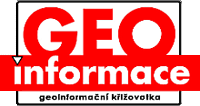zprávy
zdroje zpráv:Intergraph Government Solutions Wins USDA Contract Award
30.9.2015 2:00 Hexagon Safety & InfrastructureIntergraph Government Solutions (IGS), a wholly-owned subsidiary of Intergraph Corporation, a Hexagon company, serving the U.S. federal market, was awarded a contract by the U.S. Department of Agriculture (USDA) U.S. Forest Service to provide image processing software across the U.S. Forest Service enterprise.
IGS will provide capabilities for core image processing and photogrammetry through Hexagon Geospatial's Power Portfolio, including ERDAS IMAGINE for remote sensing and IMAGINE Photogrammetry. Integration of these products into the organization allows the U.S. Forest Service to perform mission-critical image processing and analysis on nearly 200 million acres of land for objectives such as forest restoration and emergency response to wildfires.
"The U.S. Forest Service is a long-standing customer of IGS and Hexagon software. This purchase provides the agency with the most advanced geospatial technology for monitoring and managing national forest resources," said Joe Fehrenbach, CEO and president of IGS.
The result of a competitive best-value procurement, the award includes a base contract period of one year and an additional four option years. As part of the selection process, the U.S. Forest Service required live demonstrations of the proposed workflow technologies with government-provided datasets and rigorous requirements related to multiple areas of need in their business mission.
Průmyslové dny k misi ESA JUICE, 27. a 28. října 2015, Nizozemí
29.9.2015 15:21 Český Kosmický PortálVe dnech 27. a 28. října 2015 pořádá Evropská kosmická agentura (ESA) ve spolupráci s firmou Airbus Defence and Space SAS v centru ESA ESTEC v nizozemském Noordwijku průmyslové dny zaměřené na problematiku mise ESA JUICE.
Mimikry - 29. případ mjr. Zemana
29.9.2015 14:09 Zeměměřič oije v televizi na stanici Kino Barrandov ve středu 30. září 2015 od 20:15 hod.Ředitel Katastrálního pracoviště Strakonice
29.9.2015 11:31 ČÚZK /Urady/Katastralni-urady/Katastralni-urady/Katastralni-urad-pro-Jihocesky-kraj/Volna-mista/Reditel-Katastralniho-pracoviste-StrakoniceŘeditel Katastrálního pracoviště Strakonice
29.9.2015 11:31 ČÚZK - volná místa /Urady/Katastralni-urady/Katastralni-urady/Katastralni-urad-pro-Jihocesky-kraj/Volna-mista/Reditel-Katastralniho-pracoviste-StrakoniceŘeditel Katastrálního pracoviště Strakonice
29.9.2015 11:31 ČÚZK - předpisy a opatření /Urady/Katastralni-urady/Katastralni-urady/Katastralni-urad-pro-Jihocesky-kraj/Volna-mista/Reditel-Katastralniho-pracoviste-StrakoniceŘeditel Katastrálního pracoviště Prachatice
29.9.2015 11:30 ČÚZK - předpisy a opatření /Urady/Katastralni-urady/Katastralni-urady/Katastralni-urad-pro-Jihocesky-kraj/Volna-mista/Reditel-Katastralniho-pracoviste-PrachaticeŘeditel Katastrálního pracoviště Prachatice
29.9.2015 11:30 ČÚZK /Urady/Katastralni-urady/Katastralni-urady/Katastralni-urad-pro-Jihocesky-kraj/Volna-mista/Reditel-Katastralniho-pracoviste-PrachaticeŘeditel Katastrálního pracoviště Prachatice
29.9.2015 11:30 ČÚZK - volná místa /Urady/Katastralni-urady/Katastralni-urady/Katastralni-urad-pro-Jihocesky-kraj/Volna-mista/Reditel-Katastralniho-pracoviste-PrachaticeŘeditel Katastrálního pracoviště Písek
29.9.2015 11:29 ČÚZK - volná místa /Urady/Katastralni-urady/Katastralni-urady/Katastralni-urad-pro-Jihocesky-kraj/Volna-mista/Reditel-Katastralniho-pracoviste-PisekŘeditel Katastrálního pracoviště Písek
29.9.2015 11:29 ČÚZK /Urady/Katastralni-urady/Katastralni-urady/Katastralni-urad-pro-Jihocesky-kraj/Volna-mista/Reditel-Katastralniho-pracoviste-PisekŘeditel Katastrálního pracoviště Písek
29.9.2015 11:29 ČÚZK - předpisy a opatření /Urady/Katastralni-urady/Katastralni-urady/Katastralni-urad-pro-Jihocesky-kraj/Volna-mista/Reditel-Katastralniho-pracoviste-PisekŘeditel Katastrálního pracoviště Český Krumlov
29.9.2015 11:27 ČÚZK /Urady/Katastralni-urady/Katastralni-urady/Katastralni-urad-pro-Jihocesky-kraj/Volna-mista/Reditel-Katastralniho-pracoviste-Cesky-KrumlovŘeditel Katastrálního pracoviště Český Krumlov
29.9.2015 11:27 ČÚZK - volná místa /Urady/Katastralni-urady/Katastralni-urady/Katastralni-urad-pro-Jihocesky-kraj/Volna-mista/Reditel-Katastralniho-pracoviste-Cesky-KrumlovŘeditel Katastrálního pracoviště Český Krumlov
29.9.2015 11:27 ČÚZK - předpisy a opatření /Urady/Katastralni-urady/Katastralni-urady/Katastralni-urad-pro-Jihocesky-kraj/Volna-mista/Reditel-Katastralniho-pracoviste-Cesky-KrumlovEGNOS LPV 200 Enables Safer Aircraft Landings
29.9.2015 10:53 European GNSS Agency
European GNSS Agency (GSA) says new EGNOS service will offer better access to airports and reduce delays, diversions and cancellations.
The European GNSS Agency (GSA) has launched new technology that provides pilots with enhanced instruments for safer aircraft landings, even in poor weather conditions. The announcement was made at the annual EGNOS Service Provision Workshop being held this week in Copenhagen.
LPV-200 (Localizer Performance with Vertical guidance) delivers accurate information on an aircraft’s approach to a runway with the use of GNSS positioning technology. The result is lateral and angular vertical guidance without the need for visual contact with the ground until an aircraft is 200 feet above the runway.
LPV-200 is a key milestone in the development of European Satellite Navigation and EGNOS (European Geostationary Navigation Overlay Service), which provides GPS augmentation in Europe. LPV-200 is free and requires no upgrade to an airport’s ground infrastructure or to existing certified EGNOS receivers.
Watch This: EGNOS for the Aviation Sector
“EGNOS LPV-200 is now the most cost effective and safest solution for airports,” said GSA Executive Director, Carlo des Dorides. “This is another big step forward for European satellite navigation and aviation.”
With LPV-200, passengers in Europe will see increased accessibility to airports. Pilots can land an aircraft more safely, especially in bad weather conditions, thus reducing delays, diversions and cancellations. The more efficient landings allowed for by LPV-200 will also cut costs and fuel consumption, reducing the overall cost of air travel.
The Details
The new EGNOS LPV-200 service level now enables aircraft approaches that are operationally equivalent to ILS CAT I: providing lateral and angular vertical guidance without the need for visual contact with the ground until a Decision Height (DH) of down to only 200 ft. above the runway. These EGNOS-based approaches are considered ILS look-alike, but without the need for the expensive ground infrastructure required for ILS.
EGNOS LPV-200 based approaches, lowered from LPV-250, guarantee all the advantages provided by an ILS CAT I approach with the airspace design flexibility of a PBN approach. Benefits include:
- Reduced risks associated with landing in bad weather conditions
- Increased accessibility to airports
- Reduced delays, diversions and cancellations (cutting costs)
- Increased airspace capacity and reduction of both ATC and pilot workload
- Improved efficiency of operations, lowering fuel consumption, CO2 emissions and decreasing aviation’s environmental impact
This new EGNOS Safety of Life (SoL) service level is available free of charge to all European users within the service coverage area. EGNOS LPV-200 supports civil aviation operations during approaches to airports and helipads. The service requires no upgrade to an airport’s ground infrastructure or to existing certified EGNOS receivers.
Read This: EGNOS in Action – Aviation
LPV-200 is a key milestone in the development of European Satellite Navigation and EGNOS, Europe’s SBAS, which has provided civil aviation-certified GPS augmentation over Europe since 2011. Today over 150 European Airports use EGNOS and it is estimated that by 2018 the number will increase to 440.
More Information
Media note: This feature can be republished without charge provided the European GNSS Agency (GSA) is acknowledged as the source at the top or the bottom of the story. You must request permission before you use any of the photographs on the site. If you republish, we would be grateful if you could link back to the GSA website (http://www.gsa.europa.eu).

EGNOS LPV 200 Enables Safer Aircraft Landings
29.9.2015 10:53 European GNSS Agency
European GNSS Agency (GSA) says new EGNOS service will offer better access to airports and reduce delays, diversions and cancellations.
The European GNSS Agency (GSA) has launched new technology that provides pilots with enhanced instruments for safer aircraft landings, even in poor weather conditions. The announcement was made at the annual EGNOS Service Provision Workshop being held this week in Copenhagen.
LPV-200 (Localizer Performance with Vertical guidance) delivers accurate information on an aircraft’s approach to a runway with the use of GNSS positioning technology. The result is lateral and angular vertical guidance without the need for visual contact with the ground until an aircraft is 200 feet above the runway.
LPV-200 is a key milestone in the development of European Satellite Navigation and EGNOS (European Geostationary Navigation Overlay Service), which provides GPS augmentation in Europe. LPV-200 is free and requires no upgrade to an airport’s ground infrastructure or to existing certified EGNOS receivers.
Watch This: EGNOS for the Aviation Sector
“EGNOS LPV-200 is now the most cost effective and safest solution for airports,” said GSA Executive Director, Carlo des Dorides. “This is another big step forward for European satellite navigation and aviation.”
With LPV-200, passengers in Europe will see increased accessibility to airports. Pilots can land an aircraft more safely, especially in bad weather conditions, thus reducing delays, diversions and cancellations. The more efficient landings allowed for by LPV-200 will also cut costs and fuel consumption, reducing the overall cost of air travel.
The Details
The new EGNOS LPV-200 service level now enables aircraft approaches that are operationally equivalent to ILS CAT I: providing lateral and angular vertical guidance without the need for visual contact with the ground until a Decision Height (DH) of down to only 200 ft. above the runway. These EGNOS-based approaches are considered ILS look-alike, but without the need for the expensive ground infrastructure required for ILS.
EGNOS LPV-200 based approaches, lowered from LPV-250, guarantee all the advantages provided by an ILS CAT I approach with the airspace design flexibility of a PBN approach. Benefits include:
- Reduced risks associated with landing in bad weather conditions
- Increased accessibility to airports
- Reduced delays, diversions and cancellations (cutting costs)
- Increased airspace capacity and reduction of both ATC and pilot workload
- Improved efficiency of operations, lowering fuel consumption, CO2 emissions and decreasing aviation’s environmental impact
This new EGNOS Safety of Life (SoL) service level is available free of charge to all European users within the service coverage area. EGNOS LPV-200 supports civil aviation operations during approaches to airports and helipads. The service requires no upgrade to an airport’s ground infrastructure or to existing certified EGNOS receivers.
Read This: EGNOS in Action – Aviation
LPV-200 is a key milestone in the development of European Satellite Navigation and EGNOS, Europe’s SBAS, which has provided civil aviation-certified GPS augmentation over Europe since 2011. Today over 150 European Airports use EGNOS and it is estimated that by 2018 the number will increase to 440.
More Information
Media note: This feature can be republished without charge provided the European GNSS Agency (GSA) is acknowledged as the source at the top or the bottom of the story. You must request permission before you use any of the photographs on the site. If you republish, we would be grateful if you could link back to the GSA website (http://www.gsa.europa.eu).

EGNOS LPV 200 Enables Safer Aircraft Landings
29.9.2015 10:53 European GNSS Agency
European GNSS Agency (GSA) says new EGNOS service will offer better access to airports and reduce delays, diversions and cancellations.
The European GNSS Agency (GSA) has launched new technology that provides pilots with enhanced instruments for safer aircraft landings, even in poor weather conditions. The announcement was made at the annual EGNOS Service Provision Workshop being held this week in Copenhagen.
LPV-200 (Localizer Performance with Vertical guidance) delivers accurate information on an aircraft’s approach to a runway with the use of GNSS positioning technology. The result is lateral and angular vertical guidance without the need for visual contact with the ground until an aircraft is 200 feet above the runway.
LPV-200 is a key milestone in the development of European Satellite Navigation and EGNOS (European Geostationary Navigation Overlay Service), which provides GPS augmentation in Europe. LPV-200 is free and requires no upgrade to an airport’s ground infrastructure or to existing certified EGNOS receivers.
Watch This: EGNOS for the Aviation Sector
“EGNOS LPV-200 is now the most cost effective and safest solution for airports,” said GSA Executive Director, Carlo des Dorides. “This is another big step forward for European satellite navigation and aviation.”
With LPV-200, passengers in Europe will see increased accessibility to airports. Pilots can land an aircraft more safely, especially in bad weather conditions, thus reducing delays, diversions and cancellations. The more efficient landings allowed for by LPV-200 will also cut costs and fuel consumption, reducing the overall cost of air travel.
The Details
The new EGNOS LPV-200 service level now enables aircraft approaches that are operationally equivalent to ILS CAT I: providing lateral and angular vertical guidance without the need for visual contact with the ground until a Decision Height (DH) of down to only 200 ft. above the runway. These EGNOS-based approaches are considered ILS look-alike, but without the need for the expensive ground infrastructure required for ILS.
EGNOS LPV-200 based approaches, lowered from LPV-250, guarantee all the advantages provided by an ILS CAT I approach with the airspace design flexibility of a PBN approach. Benefits include:
- Reduced risks associated with landing in bad weather conditions
- Increased accessibility to airports
- Reduced delays, diversions and cancellations (cutting costs)
- Increased airspace capacity and reduction of both ATC and pilot workload
- Improved efficiency of operations, lowering fuel consumption, CO2 emissions and decreasing aviation’s environmental impact
This new EGNOS Safety of Life (SoL) service level is available free of charge to all European users within the service coverage area. EGNOS LPV-200 supports civil aviation operations during approaches to airports and helipads. The service requires no upgrade to an airport’s ground infrastructure or to existing certified EGNOS receivers.
Read This: EGNOS in Action – Aviation
LPV-200 is a key milestone in the development of European Satellite Navigation and EGNOS, Europe’s SBAS, which has provided civil aviation-certified GPS augmentation over Europe since 2011. Today over 150 European Airports use EGNOS and it is estimated that by 2018 the number will increase to 440.
More Information
Media note: This feature can be republished without charge provided the European GNSS Agency (GSA) is acknowledged as the source at the top or the bottom of the story. You must request permission before you use any of the photographs on the site. If you republish, we would be grateful if you could link back to the GSA website (http://www.gsa.europa.eu).

EGNOS LPV 200 Enables Safer Aircraft Landings
29.9.2015 10:53 European GNSS Agency
European GNSS Agency (GSA) says new EGNOS service will offer better access to airports and reduce delays, diversions and cancellations.
The European GNSS Agency (GSA) has launched new technology that provides pilots with enhanced instruments for safer aircraft landings, even in poor weather conditions. The announcement was made at the annual EGNOS Service Provision Workshop being held this week in Copenhagen.
LPV-200 (Localizer Performance with Vertical guidance) delivers accurate information on an aircraft’s approach to a runway with the use of GNSS positioning technology. The result is lateral and angular vertical guidance without the need for visual contact with the ground until an aircraft is 200 feet above the runway.
LPV-200 is a key milestone in the development of European Satellite Navigation and EGNOS (European Geostationary Navigation Overlay Service), which provides GPS augmentation in Europe. LPV-200 is free and requires no upgrade to an airport’s ground infrastructure or to existing certified EGNOS receivers.
Watch This: EGNOS for the Aviation Sector
“EGNOS LPV-200 is now the most cost effective and safest solution for airports,” said GSA Executive Director, Carlo des Dorides. “This is another big step forward for European satellite navigation and aviation.”
With LPV-200, passengers in Europe will see increased accessibility to airports. Pilots can land an aircraft more safely, especially in bad weather conditions, thus reducing delays, diversions and cancellations. The more efficient landings allowed for by LPV-200 will also cut costs and fuel consumption, reducing the overall cost of air travel.
The Details
The new EGNOS LPV-200 service level now enables aircraft approaches that are operationally equivalent to ILS CAT I: providing lateral and angular vertical guidance without the need for visual contact with the ground until a Decision Height (DH) of down to only 200 ft. above the runway. These EGNOS-based approaches are considered ILS look-alike, but without the need for the expensive ground infrastructure required for ILS.
EGNOS LPV-200 based approaches, lowered from LPV-250, guarantee all the advantages provided by an ILS CAT I approach with the airspace design flexibility of a PBN approach. Benefits include:
- Reduced risks associated with landing in bad weather conditions
- Increased accessibility to airports
- Reduced delays, diversions and cancellations (cutting costs)
- Increased airspace capacity and reduction of both ATC and pilot workload
- Improved efficiency of operations, lowering fuel consumption, CO2 emissions and decreasing aviation’s environmental impact
This new EGNOS Safety of Life (SoL) service level is available free of charge to all European users within the service coverage area. EGNOS LPV-200 supports civil aviation operations during approaches to airports and helipads. The service requires no upgrade to an airport’s ground infrastructure or to existing certified EGNOS receivers.
Read This: EGNOS in Action – Aviation
LPV-200 is a key milestone in the development of European Satellite Navigation and EGNOS, Europe’s SBAS, which has provided civil aviation-certified GPS augmentation over Europe since 2011. Today over 150 European Airports use EGNOS and it is estimated that by 2018 the number will increase to 440.
More Information
Media note: This feature can be republished without charge provided the European GNSS Agency (GSA) is acknowledged as the source at the top or the bottom of the story. You must request permission before you use any of the photographs on the site. If you republish, we would be grateful if you could link back to the GSA website (http://www.gsa.europa.eu).

Shaping next-generation scientists
29.9.2015 10:49 ESA Observing the Earth
With the new Earth observation satellites carrying a range of technologies such as radar and multispectral imaging instruments for land, ocean and atmospheric monitoring, data are available for the next 20–30 years. However, this means little unless there are capable people handling them.
Přednášky letošní Konference GIS Esri v ČR
29.9.2015 10:40 ARCDATA Minulý týden jsme Vám představili hlavní řečníky konference a nyní odkrýváme první informace o jejím dalším programu.20150929-výběrové řízení ředitelé KP Praha-východ a Praha-západ
29.9.2015 10:26 ČÚZK /Aktuality-resort/20150929-vyberove-rizeni-reditele-KP-Praha-vychod20150929-výběrové řízení ředitelé KP Praha-východ a Praha-západ
29.9.2015 10:26 ČÚZK - předpisy a opatření /Aktuality-resort/2015/20150929-vyberove-rizeni-reditele-KP-Praha-vychod20150929-výběrové řízení ředitelé KP Praha-východ a Praha-západ
29.9.2015 10:26 ČÚZK /Aktuality-resort/2015/20150929-vyberove-rizeni-reditele-KP-Praha-vychod20150929-výběrové řízení ředitelé KP Praha-východ a Praha-západ
29.9.2015 10:26 ČÚZK - předpisy a opatření /Aktuality-resort/20150929-vyberove-rizeni-reditele-KP-Praha-vychodSympozium GIS Ostrava 2016 (1. cirkulář)
29.9.2015 8:51 GISportal.cz Dovolte mi Vás pozvat na Sympozium GIS Ostrava 2016, tentokrát v novém březnovém termínu (16. – 18. 3. 2016). Jedná se již o 13. ročník a opět zaštiťuje dvě paralelní konference, z nichž každá má svůj programový ...Družice Galileo předány provozovateli
29.9.2015 8:38 Český Kosmický PortálNejnovější pár evropských družic Galileo úspěšně prošel přejímkovými testy ve vesmíru, což dovolilo předat jeho řízení z testovacího do hlavního střediska a rozšířit tak počet členů navigační flotily.
Družice Galileo předány provozovateli
29.9.2015 8:38 Český Kosmický PortálNejnovější pár evropských družic Galileo úspěšně prošel přejímkovými testy ve vesmíru, což dovolilo předat jeho řízení z testovacího do hlavního střediska a rozšířit tak počet členů navigační flotily.
Měli jsme přednášky na Semináři o UAV od Slezského spolku geodetů
29.9.2015 8:24 UpVision Minulý týden měl Jakub 3 přednášky na Semináři o využití UAV k mapování, který pořádal Slezský spolek geodetů v krásné lokalitě hřebčína v Albertovci na Opavsku...Více zde:
http://www.phil.muni.cz/wuam/home/Downloads/aktuality/pozvanka%20UAS%202015.pdf
GIS Esri v ČR - přehled přednášek
29.9.2015 7:00 Česká asociace pro geoinformace Chystáte se na letošní ročník konference GIS Esri v ČR? Prohlédněte si již nyní přehledSeminář Autorské právo: otázky a odpovědi
29.9.2015 7:00 Česká asociace pro geoinformace V pondělí 26. října 2015 se pod záštitou projektu Zvýšení efektivity ochrany autorských práv v kartografii a geoinformatice a ve spolupráci s Českou asociací pro geoinformace uskuteční seminář Autorské právo: otázky a odpovědi.Program semináře:
09:30 - Registrace
10.00 zahájení
Alena Vondráková, Katedra geoinformatiky Univerzity Palackého v
INSPIRE téma Adresy (AD)
29.9.2015 2:00 Cenia - Katalog metadat ČR - INSPIRE Data odpovídají směrnici INSPIRE pro téma adresy (AD). Vychází především z projektu RÚIAN (Registr územní identifikace, adres a nemovitostí), který je součástí základních registrů České Republiky a obsahuje informace o územní identifikaci, adresách a nemovitostech. Data publikovaná v rámci INSPIRE obsahují pouze adresní místa a jejich komponenty, kterými jsou stát, obec, část obce, městský obvod v Praze (MOP), městký obvod/městská část (MO/MČ), ulice a pošta a to na území celé České Republiky. Obsahují rozvněž geometrii, která určuje definiční bod adresního místa. V datové sadě nění uvedeno 3,30%, t.j. 95664 adresních míst (k 28. 09. 2015), protože neobsahují definiční bod, podle kterého by je bylo možné prostorově určit. Více v zákoně č. 111/2009 Sb., o základních registrech a ve vyhlášce č. 359/2011 Sb., o základním registru územní identifikace, adres a nemovitostí v platných zněních a INSPIRE Data Specification on Addresses v 3.0.1 z 26.4.2010.Důlní díla
29.9.2015 2:00 Cenia - Katalog metadat ČR - INSPIRE WMS služba obsahuje základní údaje o jednotlivých hlubinných důlních dílech, kterými jsou podle § 10, odst.8 zákona č. 61/1988 Sb., o hornické činnosti, výbušninách a o státní báňské správě, ve znění pozdějších předpisů, všechna důlní díla, která vyúsťují na povrch, a důlní díla otevírající výhradní ložisko nebo jeho ucelenou část.Katastrální mapa - vektorová
29.9.2015 2:00 Cenia - Katalog metadat ČR - INSPIRE Katastrální mapa je závazným státním mapovým dílem velkého měřítka, obsahuje body polohového bodového pole, polohopis a popis. Katastrální mapa ve vektorové podobě je poskytována zdarma ve formátu DGN a obsahuje prvky Digitální katastrální mapy (DKM) a Katastrální mapy digitalizované (KMD), tedy bodová pole, budovy, další prvky mapy, hranice parcel, katastrální hranice, parcely katastru nemovitostí, prvky orientační mapy a hranice věcného břemene. Z důvodu použití formátu DGN produkt neobsahuje značky na liniích a oblouky jsou nahrazeny lomenými čárami. U vztažného bodu popisných textů a parcelních čísel dochází k posunu o vzdálenost mezi vztažným bodem textu a bodem ve středu popisného textu. Katastrální mapa ve vektorové podobě k 28. 09. 2015 pokrývá 78,24% území České republiky, t.j. 61 703,45km2. Více katastrální vyhláška č.357/2013 Sb. v platném znění.Katastrální mapa - rastrová
29.9.2015 2:00 Cenia - Katalog metadat ČR - INSPIRE Katastrální mapa je závazným státním mapovým dílem velkého měřítka, obsahuje body polohového bodového pole, polohopis a popis. Katastrální mapa v rastrové podobě je poskytována za úplatu a obsahuje analogovou mapu s kompletní kresbou. Analogová mapa pokrývá 16,79 % území České republiky, což je 13 245,48km2. Více katastrální vyhláška č.357/2013 Sb. v platném znění.INSPIRE téma Parcely (CP)
29.9.2015 2:00 Cenia - Katalog metadat ČR - INSPIRE Data odpovídají směrnici INSPIRE pro téma katastrální parcely (CP). Vychází z katastrální mapy, která je závazným státním mapovým dílem velkého měřítka, obsahuje body polohového bodového pole, polohopis a popis a může mít formu digitální mapy, analogové mapy nebo digitalizované mapy. Data publikovaná v rámci INSPIRE obsahují pouze katastrální území (pro celou Českou Republiku) a parcely a jejich hranice z území, kde je digitální mapa (k 28. 09. 2015 je to 78,24% území České republiky, t.j. 61 703,45km2). Více katastrální zákon 256/2013 Sb., katastrální vyhláška č.357/2013 Sb. v platném znění a INSPIRE Data Specification on Cadastral Parcels v 3.0.1.Geoparky
29.9.2015 2:00 Cenia - Katalog metadat ČR - INSPIRE Hranice kandidátských, národních a mezinárodních geoparků; vrstva obsahuje složené prvky (Multipart Features); © AOPK ČR, 2015Rakovnické události do finále rozhodně nedospěly
28.9.2015 9:09 Zeměměřič Rakovnické události do finále, nálezem ústavního soudu z 13.8.2015, jím tento soud odmítl ústavní stínost vlastníků pozemků v Újezdu nad Zbečnem, rozhodně nedospěly, jak měli zvědět vytrvalí diskutéři z jedné faktické informace Lumíra Nedvídka v internetové konferenci katastr nemovitostí.Závaznost návodů ČÚZK
28.9.2015 7:08 Zeměměřič Vnitřní resortní předpisy nejsou pramenem práva a vztahují se výlučně na zaměstnance resortu, zatímco pro ostatní, tedy i pro soukromé zeměměřiče platí„Street View“ pro kočku
28.9.2015 6:59 GISportal.cz V japonském městě Onomichi poblíž Hirošimy připravili speciální projekt s cílem propagovat město pro turisty – jedná se o podobiznu Google Street View, avšak procházka ulicemi je v úrovni zraku koček (tedy při zemi). V ...ČGS – pozvánka na přednášku (Cestovatelské úterky)
26.9.2015 13:50 Katedra geografie UP Olomouc Zveme Vás na přednášku v cyklu Cestovatelské úterkyŘecko: Vlakem na Olymp
která se uskuteční v úterý 29. září 2015 od 18.30 do 20.00 na učebně LP 3005. Přednáší Jan Odehnal (pozvánka).
Pedagogické praxe 29. 9. až 16. 10. 2015
25.9.2015 16:27 Katedra geografie UP Olomouc Ve dnech 29. září až 16. října 2015 konají studenti 2. ročníku navazujícího studia Učitelství geografie pro SŠ a také studenti souběžného a doplňujícího pedagogického studia praxi na školách podle tohoto rozpisu.Maritime security
25.9.2015 15:23 ESA Observing the Earth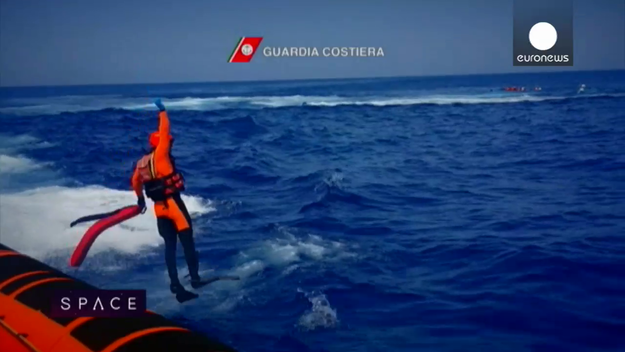
ESA Euronews: Satellites play a crucial role in all aspects of maritime security
Big shake next for air pollution satellite
25.9.2015 13:51 ESA Observing the Earth
The launch of Sentinel-5 Precursor is planned for next spring so the satellite is being put through its paces to make sure it is fit for liftoff and life in orbit tracking air pollution. Vibration and acoustic tests are next up.
Data CEDA na Ministerstvu zdravotnictví ČR
25.9.2015 12:45 CEDA Maps a.s. Praha, 22. září 2015 - S potěšením můžeme konstatovat, že dalším ministerstvem, které využívá naše data, se stalo Ministerstvo zdravotnictví ČR.20151217-Oznámení na (různé) ředitele
25.9.2015 12:35 ČÚZK - předpisy a opatření /Urady/Katastralni-urady/Katastralni-urady/Katastralni-urad-pro-Stredocesky-kraj/Katastralni-pracoviste/KP-Praha-vychod/O-uradu/Aktuality/20152509-Oznameni-na-reditele-PV20152509-Oznámení na ředitele PV
25.9.2015 12:35 ČÚZK - předpisy a opatření /Urady/Katastralni-urady/Katastralni-urady/Katastralni-urad-pro-Stredocesky-kraj/Katastralni-pracoviste/KP-Praha-vychod/O-uradu/Aktuality/20152509-Oznameni-na-reditele-PV20152509-Oznámení na ředitele PV
25.9.2015 12:35 ČÚZK /Urady/Katastralni-urady/Katastralni-urady/Katastralni-urad-pro-Stredocesky-kraj/Katastralni-pracoviste/KP-Praha-vychod/O-uradu/Aktuality/20152509-Oznameni-na-reditele-PV20151217-Oznámení na (různé) ředitele
25.9.2015 12:35 ČÚZK /Urady/Katastralni-urady/Katastralni-urady/Katastralni-urad-pro-Stredocesky-kraj/Katastralni-pracoviste/KP-Praha-vychod/O-uradu/Aktuality/20152509-Oznameni-na-reditele-PV20160203-Oznámení na vedoucí pozice KP Praha-západ
25.9.2015 12:31 ČÚZK - předpisy a opatření /Urady/Katastralni-urady/Katastralni-urady/Katastralni-urad-pro-Stredocesky-kraj/Katastralni-pracoviste/KP-Praha-zapad/O-uradu/Aktuality/20152509-Oznameni-na-reditele-PZ20160606Oznámení na vedoucí oddělení obnovy a revize katastru nemovitostí KP Praha-západ
25.9.2015 12:31 ČÚZK - předpisy a opatření Na úřední elektronické desce Katastrálního úřadu pro Středočeský kraj, v sekci "Oznámení a jiná úřední sdělení" bylo vystaveno "Oznámení o vyhlášení výběrového řízení na služební místo vedoucí oddělení obnovy a revize katastru nemovitostí pro Katastrální pracoviště Praha-západ"20160606Oznámení na vedoucí oddělení obnovy a revize katastru nemovitostí KP Praha-západ
25.9.2015 12:31 ČÚZK /Urady/Katastralni-urady/Katastralni-urady/Katastralni-urad-pro-Stredocesky-kraj/Katastralni-pracoviste/KP-Praha-zapad/O-uradu/Aktuality/20152509-Oznameni-na-reditele-PZ20160628Oznámení na rada/odborný rada – informatik Katastrál Katastrálního pracoviště-KP Praha-západ
25.9.2015 12:31 ČÚZK - předpisy a opatření Na úřední elektronické desce Katastrálního úřadu pro Středočeský kraj, v sekci "Oznámení a jiná úřední sdělení" bylo vystaveno "Oznámení o vyhlášení výběrového řízení na služební místo rada/odborný rada – informatik Katastrálního pracoviště pro Katastrální pracoviště Praha-západ"20152509-Oznámení na ředitele PZ
25.9.2015 12:31 ČÚZK - předpisy a opatření /Urady/Katastralni-urady/Katastralni-urady/Katastralni-urad-pro-Stredocesky-kraj/Katastralni-pracoviste/KP-Praha-zapad/O-uradu/Aktuality/20152509-Oznameni-na-reditele-PZ20160420-Oznámení na dvě pozice KP Praha-západ
25.9.2015 12:31 ČÚZK /Urady/Katastralni-urady/Katastralni-urady/Katastralni-urad-pro-Stredocesky-kraj/Katastralni-pracoviste/KP-Praha-zapad/O-uradu/Aktuality/20152509-Oznameni-na-reditele-PZ20160628Oznámení na rada/odborný rada – informatik Katastrál Katastrálního pracoviště-KP Praha-západ
25.9.2015 12:31 ČÚZK /Urady/Katastralni-urady/Katastralni-urady/Katastralni-urad-pro-Stredocesky-kraj/Katastralni-pracoviste/KP-Praha-zapad/O-uradu/Aktuality/20152509-Oznameni-na-reditele-PZ20160203-Oznámení na vedoucí pozice KP Praha-západ
25.9.2015 12:31 ČÚZK /Urady/Katastralni-urady/Katastralni-urady/Katastralni-urad-pro-Stredocesky-kraj/Katastralni-pracoviste/KP-Praha-zapad/O-uradu/Aktuality/20152509-Oznameni-na-reditele-PZ20152509-Oznámení na ředitele PZ
25.9.2015 12:31 ČÚZK /Urady/Katastralni-urady/Katastralni-urady/Katastralni-urad-pro-Stredocesky-kraj/Katastralni-pracoviste/KP-Praha-zapad/O-uradu/Aktuality/20152509-Oznameni-na-reditele-PZ20160420-Oznámení na dvě pozice KP Praha-západ
25.9.2015 12:31 ČÚZK - předpisy a opatření /Urady/Katastralni-urady/Katastralni-urady/Katastralni-urad-pro-Stredocesky-kraj/Katastralni-pracoviste/KP-Praha-zapad/O-uradu/Aktuality/20152509-Oznameni-na-reditele-PZ20152509-Oznámení na ředitele Ben, Mbl, Kol, Prb
25.9.2015 12:28 ČÚZK - předpisy a opatření /Urady/Katastralni-urady/Katastralni-urady/Katastralni-urad-pro-Stredocesky-kraj/O-uradu/Aktuality/20152509-Oznameni-na-reditele-TS,-PZ-a-PV20152509-Oznámení na ředitele Ben, Mbl, Kol, Prb
25.9.2015 12:28 ČÚZK /Urady/Katastralni-urady/Katastralni-urady/Katastralni-urad-pro-Stredocesky-kraj/O-uradu/Aktuality/20152509-Oznameni-na-reditele-TS,-PZ-a-PV20162901-Oznámení na ředitele KP-Berou, Rakovník a Slaný
25.9.2015 12:28 ČÚZK /Urady/Katastralni-urady/Katastralni-urady/Katastralni-urad-pro-Stredocesky-kraj/O-uradu/Aktuality/20152509-Oznameni-na-reditele-TS,-PZ-a-PV20152509-Oznámení na ředitele TS, PZ a PV
25.9.2015 12:28 ČÚZK /Urady/Katastralni-urady/Katastralni-urady/Katastralni-urad-pro-Stredocesky-kraj/O-uradu/Aktuality/20152509-Oznameni-na-reditele-TS,-PZ-a-PV20162901-Oznámení na ředitele KP-Berou, Rakovník a Slaný
25.9.2015 12:28 ČÚZK - předpisy a opatření /Urady/Katastralni-urady/Katastralni-urady/Katastralni-urad-pro-Stredocesky-kraj/O-uradu/Aktuality/20152509-Oznameni-na-reditele-TS,-PZ-a-PV20152509-Oznámení na ředitele TS, PZ a PV
25.9.2015 12:28 ČÚZK - předpisy a opatření /Urady/Katastralni-urady/Katastralni-urady/Katastralni-urad-pro-Stredocesky-kraj/O-uradu/Aktuality/20152509-Oznameni-na-reditele-TS,-PZ-a-PVOznámení o vyhlášení výběrového řízení na služební místo ředitele Katastrálního pracoviště Prah
25.9.2015 12:23 ČÚZK /Urady/Katastralni-urady/Katastralni-urady/Katastralni-urad-pro-Stredocesky-kraj/Uredni-deska/Oznameni-a-jina-uredni-sdeleni/Volna-mista/Oznameni-o-vyhlaseni-vyberoveho-rizeni-na-sluz-(8)Oznámení o vyhlášení výběrového řízení na služební místo ředitele Katastrálního pracoviště Prah
25.9.2015 12:23 ČÚZK - volná místa /Urady/Katastralni-urady/Katastralni-urady/Katastralni-urad-pro-Stredocesky-kraj/Uredni-deska/Oznameni-a-jina-uredni-sdeleni/Volna-mista/Oznameni-o-vyhlaseni-vyberoveho-rizeni-na-sluz-(8)Oznámení o vyhlášení výběrového řízení na služební místo ředitele Katastrálního pracoviště Prah
25.9.2015 12:23 ČÚZK - předpisy a opatření /Urady/Katastralni-urady/Katastralni-urady/Katastralni-urad-pro-Stredocesky-kraj/Uredni-deska/Oznameni-a-jina-uredni-sdeleni/Volna-mista/Oznameni-o-vyhlaseni-vyberoveho-rizeni-na-sluz-(8)Oznámení o vyhlášení výběrového řízení na služební místo ředitele Katastrálního pracoviště Praha-zá
25.9.2015 12:20 ČÚZK /Urady/Katastralni-urady/Katastralni-urady/Katastralni-urad-pro-Stredocesky-kraj/Uredni-deska/Oznameni-a-jina-uredni-sdeleni/Volna-mista/Oznameni-o-vyhlaseni-vyberoveho-rizeni-na-sluz-(7)Oznámení o vyhlášení výběrového řízení na služební místo ředitele Katastrálního pracoviště Praha-zá
25.9.2015 12:20 ČÚZK - předpisy a opatření /Urady/Katastralni-urady/Katastralni-urady/Katastralni-urad-pro-Stredocesky-kraj/Uredni-deska/Oznameni-a-jina-uredni-sdeleni/Volna-mista/Oznameni-o-vyhlaseni-vyberoveho-rizeni-na-sluz-(7)Oznámení o vyhlášení výběrového řízení na služební místo ředitele Katastrálního pracoviště Praha-zá
25.9.2015 12:20 ČÚZK - volná místa /Urady/Katastralni-urady/Katastralni-urady/Katastralni-urad-pro-Stredocesky-kraj/Uredni-deska/Oznameni-a-jina-uredni-sdeleni/Volna-mista/Oznameni-o-vyhlaseni-vyberoveho-rizeni-na-sluz-(7)Oznámení o vyhlášení výběrového řízení na služební místo ředitele Technické sekce Katastrálního úřad
25.9.2015 12:18 ČÚZK /Urady/Katastralni-urady/Katastralni-urady/Katastralni-urad-pro-Stredocesky-kraj/Uredni-deska/Oznameni-a-jina-uredni-sdeleni/Volna-mista/Oznameni-o-vyhlaseni-vyberoveho-rizeni-na-sluz-(6)Oznámení o vyhlášení výběrového řízení na služební místo ředitele Technické sekce Katastrálního úřad
25.9.2015 12:18 ČÚZK - volná místa /Urady/Katastralni-urady/Katastralni-urady/Katastralni-urad-pro-Stredocesky-kraj/Uredni-deska/Oznameni-a-jina-uredni-sdeleni/Volna-mista/Oznameni-o-vyhlaseni-vyberoveho-rizeni-na-sluz-(6)Oznámení o vyhlášení výběrového řízení na služební místo ředitele Technické sekce Katastrálního úřad
25.9.2015 12:18 ČÚZK - předpisy a opatření /Urady/Katastralni-urady/Katastralni-urady/Katastralni-urad-pro-Stredocesky-kraj/Uredni-deska/Oznameni-a-jina-uredni-sdeleni/Volna-mista/Oznameni-o-vyhlaseni-vyberoveho-rizeni-na-sluz-(6)na_uvod_A4_v2
25.9.2015 12:05 ČÚZK - předpisy a opatření /Urady/Katastralni-urady/Katastralni-urady/Katastralni-urad-pro-hlavni-mesto-Prahu/O-uradu/Statut-Organizacni-rad-Jednaci-rad/na_uvod_A4_v2Jak_overit_adresu_ve_VDP_verze2
25.9.2015 12:04 ČÚZK - předpisy a opatření /Uvod/Produkty-a-sluzby/RUIAN/RUIAN-(1)/Jak_overit_adresu_ve_VDP_verze2Podívejte se, jak vypadal Jiho
25.9.2015 12:00 Jihočeský kraj Podívejte se, jak vypadal Jihočeský kraj před 60 lety. Mapová aplikace Ortofotomapa byla rozšířena o možnost prohlížení historického ortofota z 50. let.Podívejte se, jak vypadal Jiho
25.9.2015 12:00 Jihočeský kraj Podívejte se, jak vypadal Jihočeský kraj před 60 lety. Mapová aplikace byla rozšířena o možnost prohlížení historického ortofota z 50. let.Student GIS Projekt 2015 zná své vítěze
25.9.2015 11:01 ARCDATA Soutěž studentských projektů vyvrcholila 10. studentskou konferencí, kde odborná porota vybrala vítězné projekty.Galileo satellites handed over to operator
25.9.2015 10:55 ESA Navigation
Europe’s latest pair of Galileo satellites has passed its initial check out in space, allowing control to be handed over to the main control centre and join the growing fleet.
Galileo satellites handed over to operator
25.9.2015 10:55 ESA Navigation
Europe’s latest pair of Galileo satellites has passed its initial check out in space, allowing control to be handed over to the main control centre and join the growing fleet.
Jihočeský kraj před 60 lety
25.9.2015 10:30 Jihočeský kraj Podívejte se, jak vypadal Jihočeský kraj před 60 lety. Mapová aplikace Ortofotomapa byla rozšířena o možnost prohlížení historického ortofota z 50. let.Athens in colour
25.9.2015 10:05 ESA Observing the Earth
Earth observation image of the week: a Sentinel-2 satellite image of Athens and surroundings, also featured on the Earth from Space video programme
Znáte Prahu? Město v mapách, datech a číslech (pozvánka na výstavu)
25.9.2015 8:48 GISportal.cz Jaké je věkové složení obyvatel Prahy? Kolik dětí tu bude žít v roce 2050? Jak je na tom vaše čtvrť s čistotou ovzduší? Kde v Praze žije nejvíce psů a které policejní oddělení řeší nejvíce trestných činů? Odpovědi na ...Družice pro sledování znečištění atmosféry prochází testy
25.9.2015 8:31 Český Kosmický PortálVypuštění družice Sentinel-5 Precursor se chystá na jaro příštího roku, takže právě nyní probíhají její zkoušky, aby byla včas připravena a aby mohla začít z oběžné dráhy sledovat stav ovzduší. Nyní jsou na řadě vibrační a akustické testy.
O našem testování UAV pro E.ON v MF DNES
25.9.2015 8:24 UpVision V tuto chvíli dokončujeme všechny praktické testy bezpilotních systémů a konkrétního nasazení pro využití inspekcí elektrického vedení pro E.ON. Včera v MF DNES o budoucnosti dronů u této společnosti na základě našeho testování.Více zde:
https://plus.google.com/+UpvisionCz1/posts/H4K7CHnWMGi
20150925 - Aktualizace kontrolních sestav
25.9.2015 7:41 ČÚZK - předpisy a opatření /Uvod/Produkty-a-sluzby/RUIAN/RUIAN-novinky/20150925-Aktualizace-kontrolnich-sestav20150925 - Aktualizace kontrolních sestav
25.9.2015 7:41 ČÚZK - předpisy a opatření /Uvod/Produkty-a-sluzby/RUIAN/RUIAN-novinky/2015/20150925-Aktualizace-kontrolnich-sestav20150925 - Aktualizace kontrolních sestav
25.9.2015 7:41 ČÚZK /Uvod/Produkty-a-sluzby/RUIAN/RUIAN-novinky/20150925-Aktualizace-kontrolnich-sestav20150925 - Aktualizace kontrolních sestav
25.9.2015 7:41 ČÚZK /Uvod/Produkty-a-sluzby/RUIAN/RUIAN-novinky/2015/20150925-Aktualizace-kontrolnich-sestavNew Video Highlights Galileo Receiver Testing
25.9.2015 7:26 European GNSS Agency
The European GNSS Agency (GSA) helping Rx manufacturers to optimize Galileo integration in their products.
Since 2009, the GSA has been working with chipset and receiver manufacturers to ensure Galileo is used to its full potential. Through technology workshops, sharing Galileo updates, co-marketing efforts, and dedicated funding for receiver development projects and studies, the GSA has worked with manufacturers to create an even better navigation experience.
“The receiver is the key enabler for which all Galileo signals are translated into services,” says GSA Executive Director Carlo des Dorides. “In support of this, the GSA has coordinated a comprehensive testing programme in cooperation with the Joint Research Centre (JRC) and the European Space Agency (ESA).”
Also Read: The Fundamentals of European GNSS
In the last year, over 460 hours of tests and 91 hours of live testing in the field were conducted. These tests verify how different models integrate Galileo signals, allowing manufacturers to update their technology and get the most out of the system’s increased accuracy and reliability in multi-constellation environment.
Currently almost 40% of receiver models available on the market worldwide are Galileo-enabled, and more than 60% of available receivers integrate SBAS/EGNOS. Thanks to the testing campaign, these products will now be able to use Galileo in more optimized way.
“Over the past few years the GSA has been investing in open dialog with chipset manufactures, paving the way for Galileo to be fully integrated into new generation receivers and ensuring its signals provide a wide array of new applications and services that directly benefit European citizens,” adds des Dorides.
The video, which premiered at the recent Galileo satellite launch, gives viewers an inside look at the receiver testing process.
Watch the latest video here.
The GSA in cooperation with European Commission is continuing the exchanges with receiver manufacturers and will be sharing latest updates on the programme in the annual Rx Workshop planned for November.
More Information
Media note: This feature can be republished without charge provided the European GNSS Agency (GSA) is acknowledged as the source at the top or the bottom of the story. You must request permission before you use any of the photographs on the site. If you republish, we would be grateful if you could link back to the GSA website (http://www.gsa.europa.eu).

New Video Highlights Galileo Receiver Testing
25.9.2015 7:26 European GNSS Agency
The European GNSS Agency (GSA) helping Rx manufacturers to optimize Galileo integration in their products.
Since 2009, the GSA has been working with chipset and receiver manufacturers to ensure Galileo is used to its full potential. Through technology workshops, sharing Galileo updates, co-marketing efforts, and dedicated funding for receiver development projects and studies, the GSA has worked with manufacturers to create an even better navigation experience.
“The receiver is the key enabler for which all Galileo signals are translated into services,” says GSA Executive Director Carlo des Dorides. “In support of this, the GSA has coordinated a comprehensive testing programme in cooperation with the Joint Research Centre (JRC) and the European Space Agency (ESA).”
Also Read: The Fundamentals of European GNSS
In the last year, over 460 hours of tests and 91 hours of live testing in the field were conducted. These tests verify how different models integrate Galileo signals, allowing manufacturers to update their technology and get the most out of the system’s increased accuracy and reliability in multi-constellation environment.
Currently almost 40% of receiver models available on the market worldwide are Galileo-enabled, and more than 60% of available receivers integrate SBAS/EGNOS. Thanks to the testing campaign, these products will now be able to use Galileo in more optimized way.
“Over the past few years the GSA has been investing in open dialog with chipset manufactures, paving the way for Galileo to be fully integrated into new generation receivers and ensuring its signals provide a wide array of new applications and services that directly benefit European citizens,” adds des Dorides.
The video, which premiered at the recent Galileo satellite launch, gives viewers an inside look at the receiver testing process.
The GSA in cooperation with European Commission is continuing the exchanges with receiver manufacturers and will be sharing latest updates on the programme in the annual Rx Workshop planned for November.
More Information
Media note: This feature can be republished without charge provided the European GNSS Agency (GSA) is acknowledged as the source at the top or the bottom of the story. You must request permission before you use any of the photographs on the site. If you republish, we would be grateful if you could link back to the GSA website (http://www.gsa.europa.eu).

Stav útvarů povrchových vod a ekologický potenciál silně ovlivněných a umělých vodních útvarů
25.9.2015 2:00 Cenia - Katalog metadat ČR - INSPIRE Stavem povrchových vod se podle vodního zákona rozumí obecné vyjádření stavu útvaru povrchové vody určené ekologickým nebo chemickým stavem, podle toho, který je horší. Ekologickým stavem se rozumí vyjádření kvality struktury a funkce vodních ekosystémů vázaných na povrchové vody. Dobrým stavem povrchových vod se rozumí takový stav útvaru povrchové vody, kdy je jeho ekologický i chemický stav přinejmenším dobrý. Dobrým chemickým stavem povrchových vod se rozumí chemický stav potřebný pro dosažení cílů ochrany vod jako složky životního prostředí, při kterém koncentrace znečišťujících látek nepřekračují normy environmentální kvality. Normou environmentální kvality se rozumí koncentrace znečišťující látky nebo skupiny látek ve vodě, sedimentech nebo živých organismech, která nesmí být překročena z důvodů ochrany lidského zdraví a životního prostředí. Ekologický potenciál určuje stav silně ovlivněného nebo umělého vodního útvaru povrchové vody. Stav a potenciál útvarů povrchových vod se eviduje v rozsahu údajů o jejich číselném identifikátoru a klasifikaci jejich chemického a ekologického stavu/potenciálu. Stav vodních útvarů je hodnocen v rámci zpracování plánů povodí.ARTES Telecom Days
24.9.2015 15:55 Česká kosmická kancelářESA bude informovat o příležitostech v programových elementech ARTES zaměřených na družicové telekomunikace. V rámci akce je rovněž možná účast na konzultacích se zástupci ESA pro jednotlivé programy. Akce proběhne ve dnech 12. a 13. listopadu 2015 v centru ESTEC v Holandském Noordwijku.
Navod_pro_vedeni_Ustredniho_archivu_151083022 (1)
24.9.2015 15:15 ČÚZK - předpisy a opatření /Predpisy/Resortni-predpisy-a-opatreni/Navody-CUZK/Navod_pro_vedeni_Ustredniho_archivu_151083022-(1)Navod_pro_vedeni_Ustredniho_archivu_151083022
24.9.2015 15:14 ČÚZK - předpisy a opatření /Predpisy/Resortni-predpisy-a-opatreni/Navody-CUZK/Navod_pro_vedeni_Ustredniho_archivu_151083022Earth from Space
24.9.2015 15:05 ESA Observing the Earth
Join us Friday, 25 September, at 10:00 CEST for the ‘Earth from Space’ video programme. This week features a Sentinel-2A image of Athens and surroundings in Greece
Student GIS projekt 2015
24.9.2015 15:00 Katedra geoinformatiky UP Olomouc Gratulujeme slečně Markétě Stachové za 3. místo v bakalářské sekci a ocenění seminární práce v soutěži Student GIS Projekt 2015!Harmonogram ak. roku 2015/16
24.9.2015 12:22 Katedra geoinformatiky UP Olomouc Harmonogram akademického roku 2015/16 pro Katedru geoinformatiky je jednak v kalendáři Google a také ke stažení ve formě PDF v sekci Dokumenty.V datech územně analytických p
24.9.2015 12:00 Plzeňský kraj V datech územně analytických podkladů Plzeňského kraje byla provedena aktualizace dat o silnicích od poskytovatele Ředitelství silnic a dálnic ČR (http://geoportal.plzensky-kraj.cz/gs/rss?url=http%3A%2F%2Fgeoportal.plzensky-kraj.cz%2Ftw%2Fost%2Fgp%2Fuap%2Fposkytovatele%2Findex.php%3Fframe%26ID%3D289). Data jsou s platností k 1. 7. 2015.V datech územně analytických p
24.9.2015 12:00 Plzeňský kraj V datech územně analytických podkladů Plzeňského kraje byla provedena aktualizace dat o silnicích od poskytovatele Ředitelství silnic a dálnic ČR. Data jsou s platností k 1. 7. 2015.Earth from Space
24.9.2015 11:38 ESA Observing the Earth
Join us Friday, 25 September, at 10:00 CEST for the ‘Earth from Space’ video programme. This week features a Sentinel-2A image of Athens and surroundings in Greece
20150924 - Nové návody z oblasti zeměměřictví
24.9.2015 11:12 ČÚZK - předpisy a opatření /Urady/Zememericky-urad/O-uradu/Aktuality/20150924-Nove-navody-z-oblasti-zememerictvi20150924 - Nové návody z oblasti zeměměřictví
24.9.2015 11:12 Zeměměřický úřad /Urady/Zememericky-urad/O-uradu/Aktuality/20150924-Nove-navody-z-oblasti-zememerictvi20150924 - Nové návody z oblasti zeměměřictví
24.9.2015 11:12 ČÚZK /Urady/Zememericky-urad/O-uradu/Aktuality/20150924-Nove-navody-z-oblasti-zememerictviKometa sondy Rosetta odtajnila svůj koloběh vody a ledu
24.9.2015 8:28 Český Kosmický PortálMeziplanetární sonda ESA Rosetta zjistila detailní informace o denním cyklu vody a ledu na a blízko povrchu komety.
Minulý týden jsme navštívili partnery na Intergeo
24.9.2015 8:10 UpVision Minulý týden jsme nemohli chybět na mezinárodním veletrhu InterGeo, tentokrát v německém Stuttgartu. Kromě setkání se zahraničními partnery jsme zjišťovali novinky v oblasti UAV a příbuzného HW i SW.Více fotek z akce zde:
https://plus.google.com/+UpvisionCz1/posts/WDHDquWTJZP
VÚGTK zve na podzimní semináře
24.9.2015 7:00 Česká asociace pro geoinformace Výzkumný ústav geodetický, topografický a kartografický, v.v.i, zve všechny zájemce na podzimní semináře:8. 10. 2015 - Pozemkové knihy
15. 10. 2015 - Dálkový přístup do katastru nemovitostí
20. 10. 2015 - Problematika věcných práv v NOZ a vztah ke
GIS Ostrava 2016 - první informace
24.9.2015 7:00 Česká asociace pro geoinformace Ve dnech 16. - 18. března 2016 proběhne pod záštitou CAGI tradiční sympozium GIS Ostrava 2016. Jedná se již o 13. ročník a opět obsahuje dvě paralelní konference, z nichž každá má svůj programový výbor, témata a vize.1) GIS Ostrava 2016 – Geoinformatika pro společnost. Jednacím jazykem konference je čeština/slovenština. Příspěvky jsou přijímány na základě



